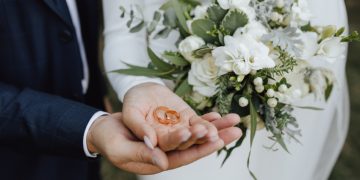The myths and legends of Dreamtime inspire aboriginal art.
Indigenous people believe that the ‘Dreamtime,’ when the world was first formed, is the inspiration for much of the present Aboriginal art they produce. The Dreamtime stories may have been handed down through the generations for 50,000 years or more, and to preserve them, everyone should buy aboriginal art.
Symbols from the indigenous culture are used.
Aboriginal people in Australia use traditional icons (symbols) and information in the artwork to tell the tales that are fundamental to their culture since there is no written language. All of these aid in preserving their cultural history and passing on crucial knowledge via tales, dance, and song. Contrary to popular belief, Aboriginal art does not commonly draw its inspiration from Western art movements, although it may be enticing.
Future generations will benefit from the wisdom shown in Aboriginal art.
Students in the classroom may also benefit from paintings in several techniques. A painting (in effect, a visual story) in Aboriginal art is often used for various purposes. The meanings connected with the iconography (or symbols) portrayed in the artwork vary according to the audience’s perspective. Storytelling might thus take on a different and higher-level structure when told to elders than when told to children.
Aboriginal tribes are available in a variety of forms.
Multiculturalism has always been a part of Australia’s history. There were numerous languages and cultural traditions throughout the globe before the arrival of Europeans. On the AIATSIS map of Indigenous Australia, you may get more information. In light of Aboriginal Australia’s wide diversity of languages, cultures, and geographic locations, it is no surprise that several regions have evolved unique creative techniques and employ a variety of artistic materials today!
Owners must provide their permission before you may depict an Aboriginal dream.
To tell a narrative, artists require permission from the narrator: An artist must get the author’s permission before painting any ancient or noteworthy stories, particularly those containing secret or sacred information. Painting a story that has its origins in family lore is out of the question for traditionally educated Aboriginal artists.
The secrets of Aboriginal dot drawings have been kept under wraps for a long time.
Confidential information was protected by using dots. When Aboriginal people began dot painting in huge numbers, they feared that white men would see and understand their divine and hidden knowledge. Over-dotting is a term used to describe how the dots cover over the iconography (symbols) underneath the surface. The Pintupi tribe’s art is an excellent example of how the primitive style gave way to the classical style.
In museums and galleries across the globe, Aboriginal art is on display.
In addition to galleries, museums should host exhibitions of Aboriginal art. Australian civilization is the world’s longest-living culture; it is highly developed and focused on long-term survival in a challenging environment, making it the oldest society. Additionally, it offers the practical skills and knowledge that are essential for survival in addition to the spiritual teachings, historical facts, and cultural behaviour. Aboriginal art is valued for its aesthetic merits but also its anthropological significance. Even newly painted pieces may be regarded as equal footing with older works for inclusion in a contemporary art exhibition or museum. Buy aboriginal art should be a great way to support indigenous communities.













